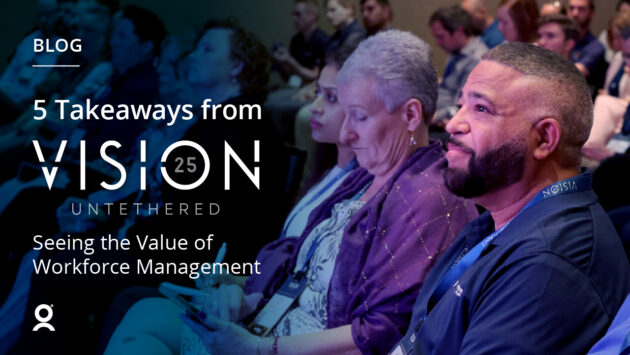After the ruling of Federacion de Servicios de Comisiones Obreras v Deutsche Bank SAE in 2019, the European Court of Justice requires Member States to set up an objective, reliable and accessible system enabling the duration of time worked each day by each worker to be measured. Failure to abide by this standard will result in significant fines levied by the EU/EUJ. These fines are likely to be larger for large organisations. The average fine for non-compliance of GDPR/Data Protection can vary based on the severity of the violation.
This mandate applies to businesses with both hourly and salaried employees as well as those working in offices or on the frontline. Regardless of industry sector, businesses that do not have a time capture system in place will need to adopt one. Likewise, those who do have a solution need to consider whether their current system meets compliance standards.
Relying on shared documents or databases that could be easily edited by another user or any solution without an audit trail will not be sustainable. Meeting these requirements will likely require a cloud-based, secure, auditable solution to track time across the entire organisation. As more Member States codify this ruling into law, businesses must take proactive steps to implement an accurate employee time tracking system.
The Cost of Non-Compliance—The Need for Better Time and Attendance Solutions
The ruling by the European Court of Justice makes it a necessity for employers to establish a system of record that accurately measures each worker’s daily working hours. Countries like Spain and Germany have already incorporated this mandate into their national legislation, signalling a broader shift towards stricter enforcement across the EU. Failing to take action and ensure that a business’s system of record meets these compliance standards results in significant fines and damage to brand reputation.
Here are example consequences of non-compliance with this ruling1:
- Non-compliance can result in fines comparable to those for GDPR breaches, which can be as high as €20 million or 4% of a company’s annual global turnover.
- For less severe infringements, the fine can be up to €10 million or 2% of the company’s annual global turnover, whichever is higher.
- Amazon recently got fined €32m for GDPR breach in France.
Fines regarding employees’ working hours are likely to be punitive and may be in a similar range to what is described above. This ruling is now over 5 years old so authorities will not be forgiving for non-compliance. To avoid this, businesses must evaluate their current time capture capabilities and ensure that their system provides an objective, reliable and accessible system that tracks hours worked each day for every worker.
Failing to upgrade to a modern workforce management solution can lead to increased operational inefficiencies, risk of non-compliance and decreased employee engagement. This not only impacts the bottom line but also hampers a company’s ability to stay competitive in the market.
The Value of Next Generation Time Management System
It’s one thing to be compliant, but it is a completely different challenge to prove compliance. While many organisations may already have a time management system in place, it is crucial to evaluate whether the current system provides adequate reporting measures for time data.
While businesses can rely on multiple solutions, it is more efficient to have all relevant information consolidated rather than scattered across multiple systems. A unified solution that can handle the complexities of both your production staff across multiple regions (for example, frontline workers based in Finland as well as office-based workers in the UK) is preferable to separate solutions for each. The benefit of a next generation time management solution with prebuilt reports is that you can retrieve data for your entire global organisation. The translates to time and cost savings, increased efficiencies and reduced stress in the event of an audit.
What to Consider When Selecting a Next-Gen Time Capture System
It is worth considering whether the integrity of the data being used for scheduling or reporting. Ideally, businesses should use a solution that will work with existing core HR solutions. Proper integration ensures that the data being utilised serves as a single source of truth and that it can be leveraged via APIs or pre-built integrations into your workforce management solution.
Also, efforts to prove compliance are meaningless if the underlying data is incorrect. Modern workforce management solutions offer effective-dating features, which are mapped to the core HR solution. This integration, coupled with an audit trail, ensures that you can not only prove compliance but also guarantee the accuracy of the data supporting it.
Companies selecting a next-gen time capture system should consider the following best practices:
- Cloud-Based Solutions: Opt for a secure, cloud-based time tracking system with an audit trail to ensure data integrity and accessibility.
- Integration with Core HR Systems: Use a solution that can seamlessly integrate with your existing HR systems through APIs or pre-built connections. This ensures consistency and accuracy in your data.
- Comprehensive Reporting: Choose a system that offers pre-built reports for easy compliance proofing. This not only saves time but also reduces stress in case of audits.
- Scalability: Ensure the solution can accommodate the diverse needs of your workforce, from office-based employees to production staff, across different regions.
- Employee Engagement: Implement features that enhance the employee experience, such as self-service portals and mobile access, to boost morale and productivity.
The mandate for accurate employee time tracking is a call to action for businesses to reassess their workforce management solutions. By adopting a proactive approach and implementing a system that meets the evolving demands of labour laws, companies can not only avoid hefty fines but also enhance their operational efficiency and employee satisfaction.
As labour laws and regulations evolve, it’s crucial to have a workforce management solution that is updated to meet these new compliance standards. Staying with a manual, outdated, or soon-to-be unsupported solution could expose businesses to the risk of non-compliance with labour, wage and union laws, which can result in legal issues, fines and reputational brand damage. This can disrupt business continuity by negatively impacting customer trust and the ability to attract talent.
Discover a reliable, accurate, and next-generation method for time capture with WorkForce Time and Attendance.




